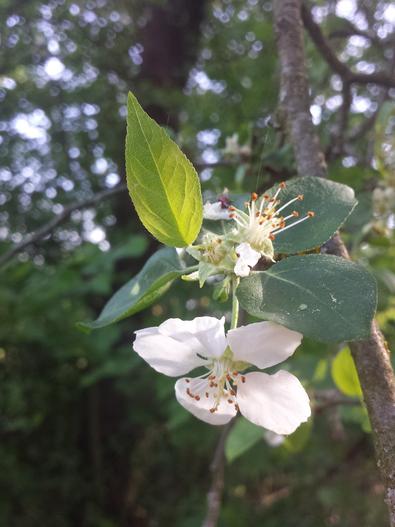European Crab Apple
(Malus ×dasyphylla)
European Crab Apple (Malus ×dasyphylla)
/
/

Stefan.lefnaer
CC BY-SA 4.0
Image By:
Stefan.lefnaer
Recorded By:
Copyright:
CC BY-SA 4.0
Copyright Notice:
Photo by: Stefan.lefnaer | License Type: CC BY-SA 4.0 | License URL: https://creativecommons.org/licenses/by-sa/4.0 | Uploader: Stefan.lefnaer | Publisher: Wikipedia Commons

























Estimated Native Range
Summary
Malus ×dasyphylla, commonly known as European Crab Apple, is a deciduous tree or large shrub native to the temperate regions of Central and Southeastern Europe. It typically reaches a height of 25-30 feet (8-9 meters) and a width of up to 22 feet (7 meters). The European Crab Apple is characterized by a rounded to spreading canopy with a dense branching structure. It produces showy white flowers in the spring, which are followed by small, yellow-green to red fruits that persist into winter, providing visual interest and food for wildlife. The bark is generally gray and may become slightly scaly with age.
The European Crab Apple is valued for its springtime floral display and its ability to adapt to a range of soil conditions, although it prefers well-drained loams. It is often used in urban settings, as a specimen tree, and in wildlife gardens. The tree is also known for its low maintenance requirements, making it a suitable choice for gardeners of varying experience levels. It requires full sun to part shade and moderate watering. While it is generally disease-resistant, it can be susceptible to common apple diseases such as apple scab and fire blight. Gardeners should be aware of its potential invasiveness outside its native range and consult local guidelines before planting.CC BY-SA 4.0
The European Crab Apple is valued for its springtime floral display and its ability to adapt to a range of soil conditions, although it prefers well-drained loams. It is often used in urban settings, as a specimen tree, and in wildlife gardens. The tree is also known for its low maintenance requirements, making it a suitable choice for gardeners of varying experience levels. It requires full sun to part shade and moderate watering. While it is generally disease-resistant, it can be susceptible to common apple diseases such as apple scab and fire blight. Gardeners should be aware of its potential invasiveness outside its native range and consult local guidelines before planting.CC BY-SA 4.0
Plant Description
- Plant Type: Tree, Shrub
- Height: 25-30 feet
- Width: 10-22 feet
- Growth Rate: Moderate
- Flower Color: White
- Flowering Season: Spring
- Leaf Retention: Deciduous
Growth Requirements
- Sun: Full Sun
- Water: Medium
- Drainage: Slow, Medium, Fast
Common Uses
Bee Garden, Bird Garden, Butterfly Garden, Low Maintenance
Natural Habitat
Temperate regions of Central and Southeastern Europe
Other Names
Common Names:
Scientific Names: , Malus ×dasyphylla, Malus pumila var. paradisiaca, Malus communis subsp. dasyphylla, Malus communis subsp. pumila, Malus domestica var. dasyphylla,
GBIF Accepted Name: Malus ×dasyphylla Borkh.